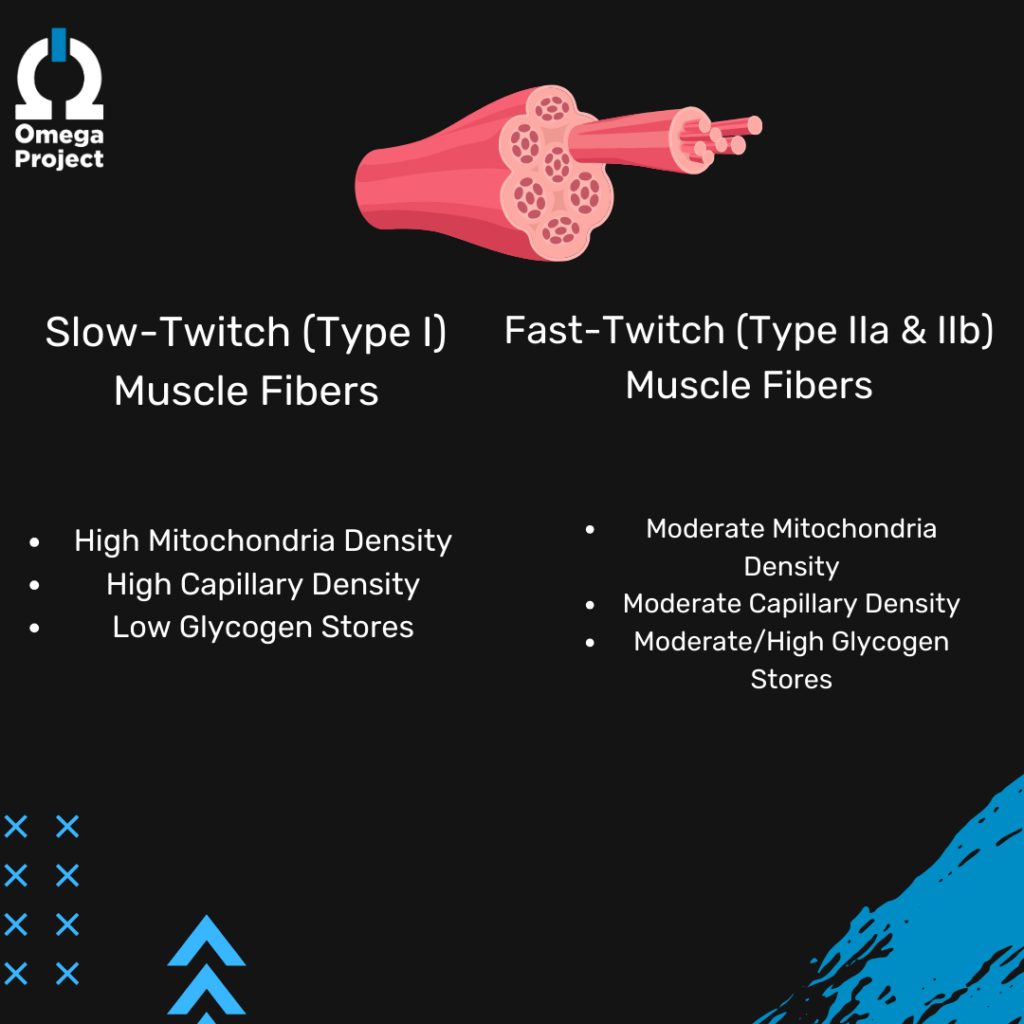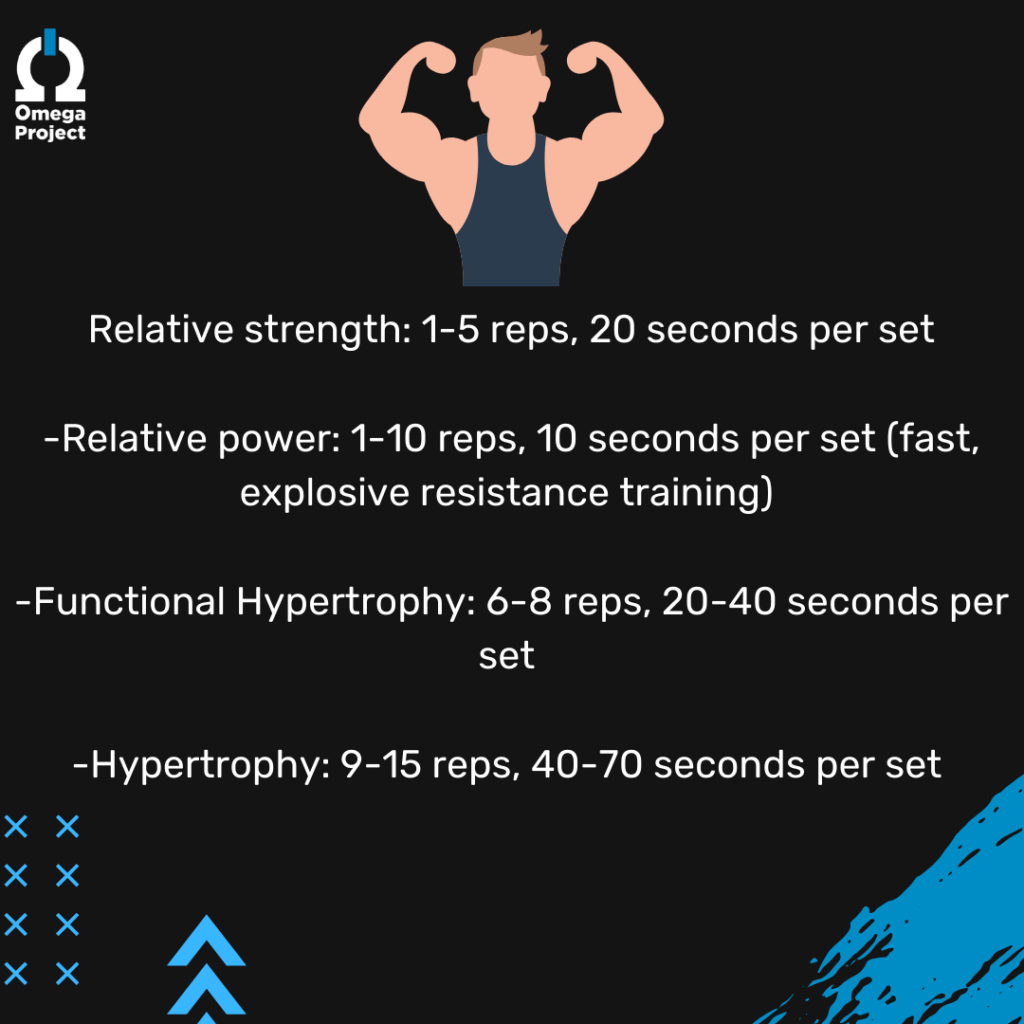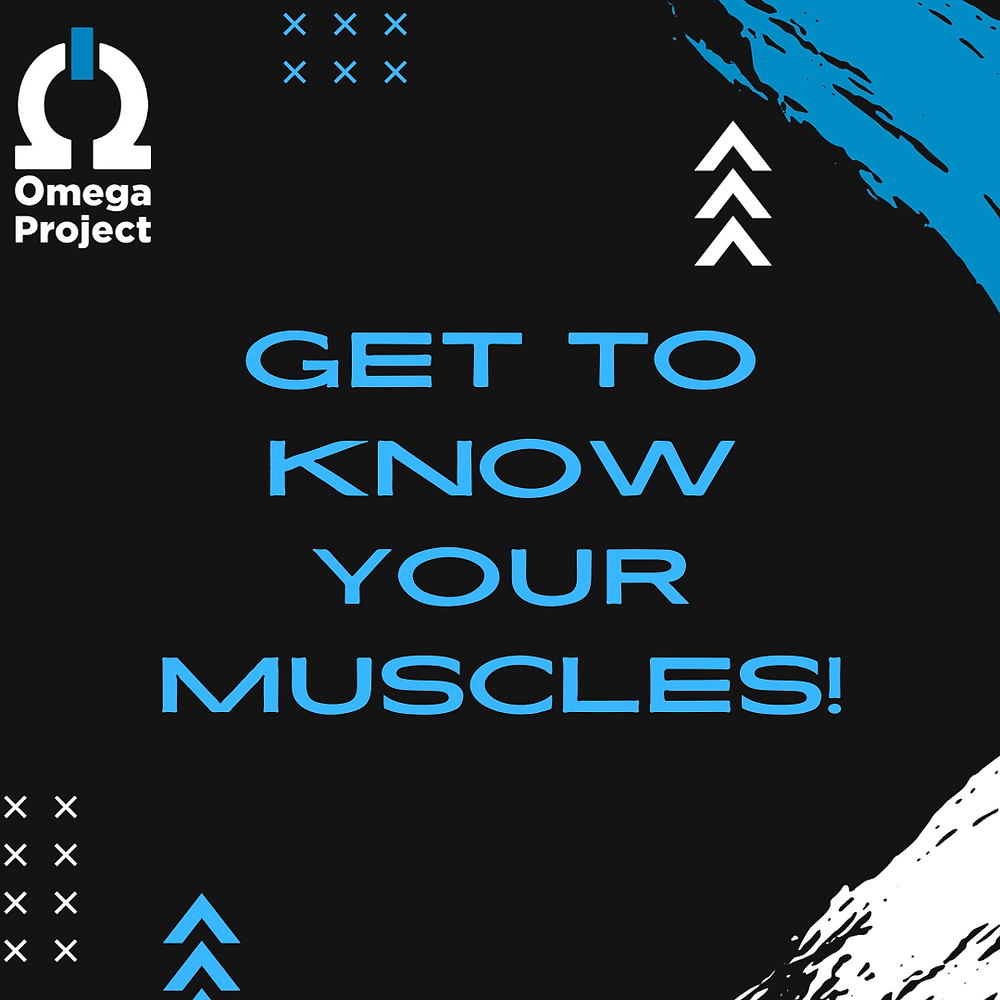Muscles are the powerhouses of our bodies, enabling us to perform everyday tasks and achieve athletic feats. However, not all muscles are created equal. There are different types of muscle; skeletal, cardiac (heart) & smooth(digestive system). Each muscle has different types of fibers within it. This post will focus on skeletal muscle types and how to effectively train both aerobic and anaerobic systems.
Fiber Types
We have 2 primary fiber types in the body: Slow-Twitch and Fast-Twitch
1. Slow-Twitch (Type I) Muscle Fibers
Slow-twitch muscle fibers, scientifically referred to as Type I fibers, are geared towards endurance. These fibers contract slowly but can sustain their contractions for prolonged periods. While they have large amounts of mitochondria and capillaries, they have LOW glycogen stores because they use oxygen to create energy as needed. They are ideal for long-duration activity and daily activities such as walking and standing. (Brooks et al., 1971).
2. Fast-Twitch (Type II) Muscle Fibers
– Fast-twitch muscle fibers, categorized into Type IIa and Type IIb, are built for power and explosiveness. Type IIa fibers have moderate endurance and strength. They have large amounts of mitochondria and capillaries while having moderate amounts of glycogen stores.
– Type IIb fibers are highly explosive but fatigue rapidly. They are used for short sprints 40-yard dash), jumping, and Olympic lifting where quick explosive movements need to be made. They have high amounts of glycogen and do not rely on oxygen to produce energy. (Bottinelli et al., 1994).

Training Strategies
You may be familiar with the term hypertrophy which is often used to describe muscle growth. However, different types of hypertrophy can occur. Myofibrillar hypertrophy refers to an increase in the diameter (not length) of the muscle fibers, while Sarcoplasmic hypertrophy refers to an increase in the volume of fluid in the muscles (this would equate to a muscle pump someone feels after lifting).
Training Type I muscle fibers generally involves longer-duration aerobic activities such as running, biking, and swimming. There is not significant hypertrophy in this muscle type. We do see a slight increase in muscle diameter with resistance training but primarily we see an increase in capillaries, and mitochondria and an improvement in the muscle’s abilities to utilize fat over glycogen to work for longer periods. (Kines et al 1993).
Training anaerobically gives us the benefits listed above but with additional benefits of decreasing blood pressure, decreasing body fat, increased HDL cholesterol, and increased insulin sensitivity. Workouts such as lactate threshold, VO2 max training, or powerlifting work on these anaerobic adaptations. These workouts will rely more heavily on Type IIa & IIb fibers.
Most athletes will benefit from concurrent training (defined as training both endurance and strength in 24 hours) of both aerobic and anaerobic systems. However, one must be careful as concurrent training in a trained individual may affect the force/power output.
Large endurance training has an impact on strength gains. The opposite is not true as it has been shown that endurance is only minimally affected by the introduction of strength training (meaning a runner can safely introduce strength training without significant interference to their endurance).
Resistance/Load Intensity
Determining your goals when training is important as it will impact how you train strength and endurance. Working with a strength training professional or coach can help mitigate injury and errors in a given strength/endurance training cycle.
Below is a general guide regarding reps and the length of each set for strength training.

Final Thoughts
Understanding the nuances of muscle fiber types and applying evidence-based training strategies can be a game-changer in your fitness journey. Remember that a balanced fitness program should incorporate various exercises that target all muscle fiber types, promoting overall functional fitness and performance. As always, is important to make sure you are training for your specific goals!
Interested in learning more about how to maximize your training and help prevent injury? Sign up for a discovery visit or coaching call today!
Sources:
- Brooks, G. A., Fahey, T. D., & White, T. P. (1971). Specific adaptations in muscle to training and nutrition in rats. Journal of Applied Physiology, 31(5), 653-658.
- Bottinelli, R., Canepari, M., Pellegrino, M. A., & Reggiani, C. (1994). Force-velocity properties of human skeletal muscle fibers: myosin heavy chain isoform and temperature dependence. The Journal of Physiology, 495(2), 573-586.
- MacArthur, D. G., North, K. N., & ACTN3, H. (2007). A gene for speed. BMC Genomics, 8(1), 1-10.

